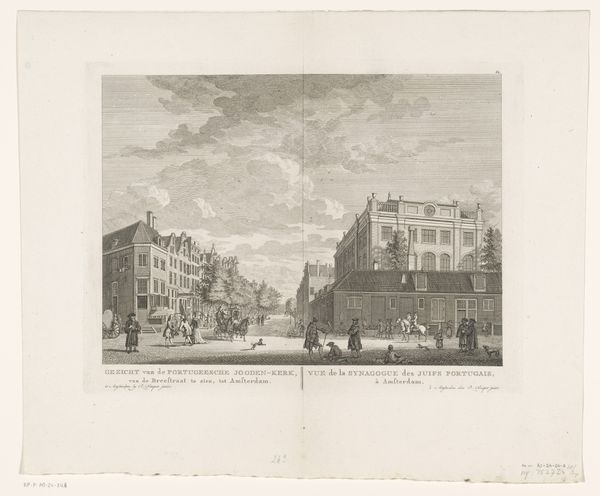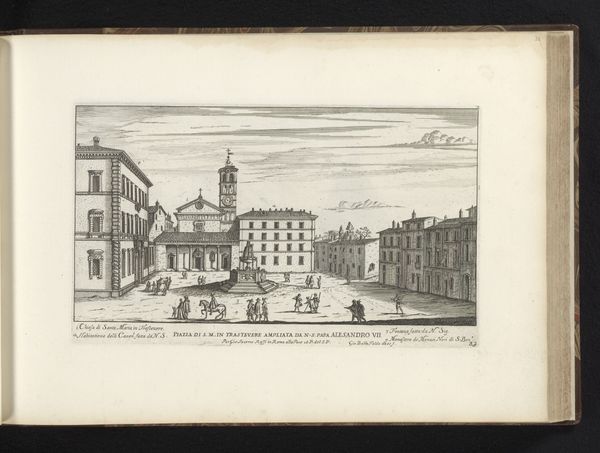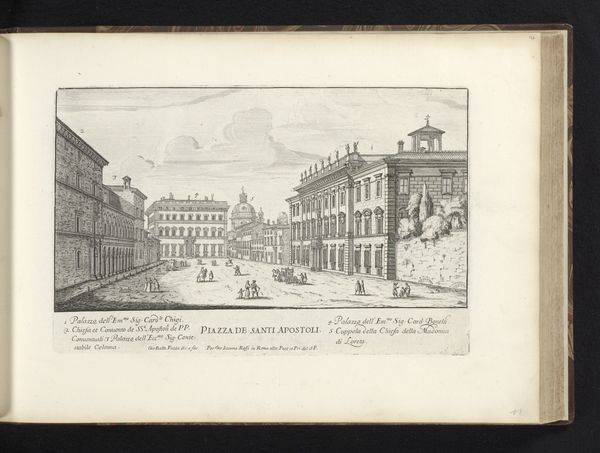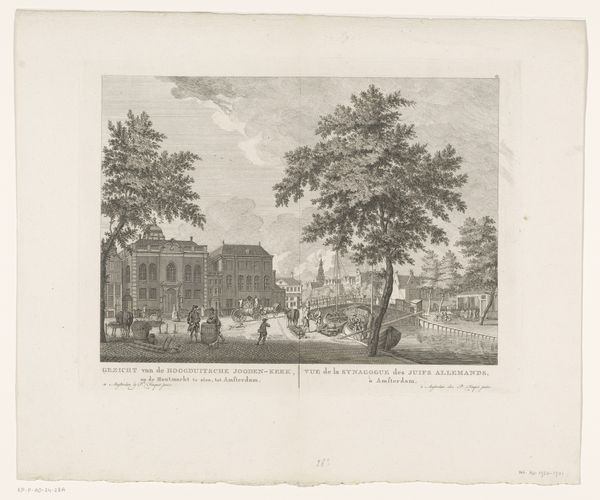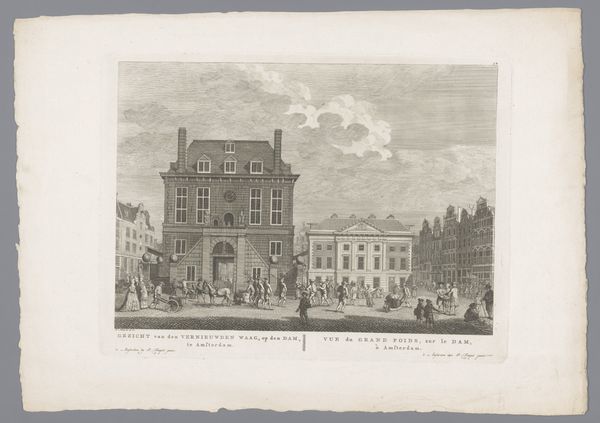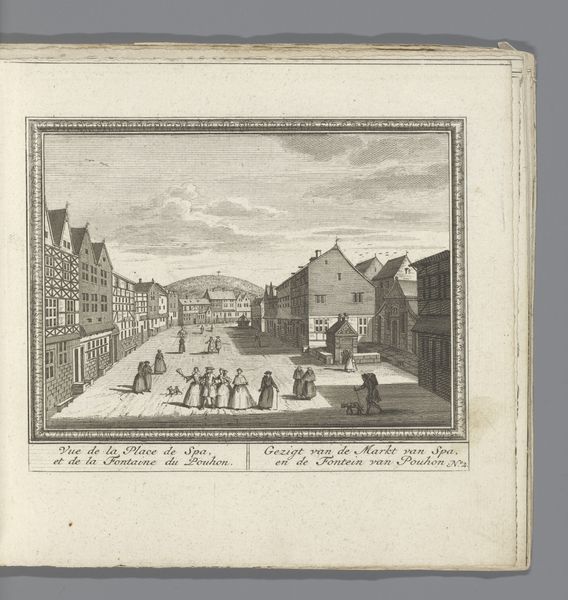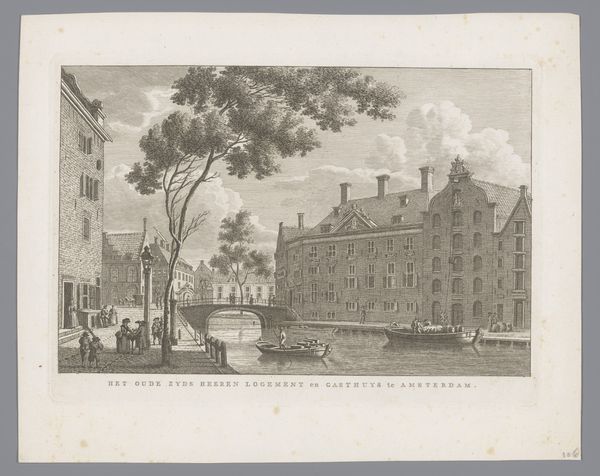
print, engraving
#
baroque
# print
#
landscape
#
line
#
cityscape
#
engraving
Dimensions: height 130 mm, width 167 mm
Copyright: Rijks Museum: Open Domain
This is Jan van Call’s etching of Gezicht op de Doelen, made in the late 17th century. During this time, the Dutch Republic was a major economic and cultural power, yet the period was also marked by social stratification and the growth of a merchant elite. Van Call’s print offers a glimpse into the spatial dynamics of class in The Hague, where the architecture and urban planning reflected societal hierarchies. Notice how the artist’s depiction of the Doelen—a kind of shooting range, but also a social club—positions it in relation to the surrounding buildings and open spaces. This arrangement was surely designed to communicate power and prestige. The Doelen would have served as a space for the city's elite to gather, socialize, and assert their social status. This etching, with its detailed rendering of architecture and subtle suggestion of social life, opens a window onto the complex interplay of space, power, and identity in the Dutch Golden Age. It prompts us to consider how urban environments are always shaping and reflecting the social relations of their time.
Comments
No comments
Be the first to comment and join the conversation on the ultimate creative platform.


